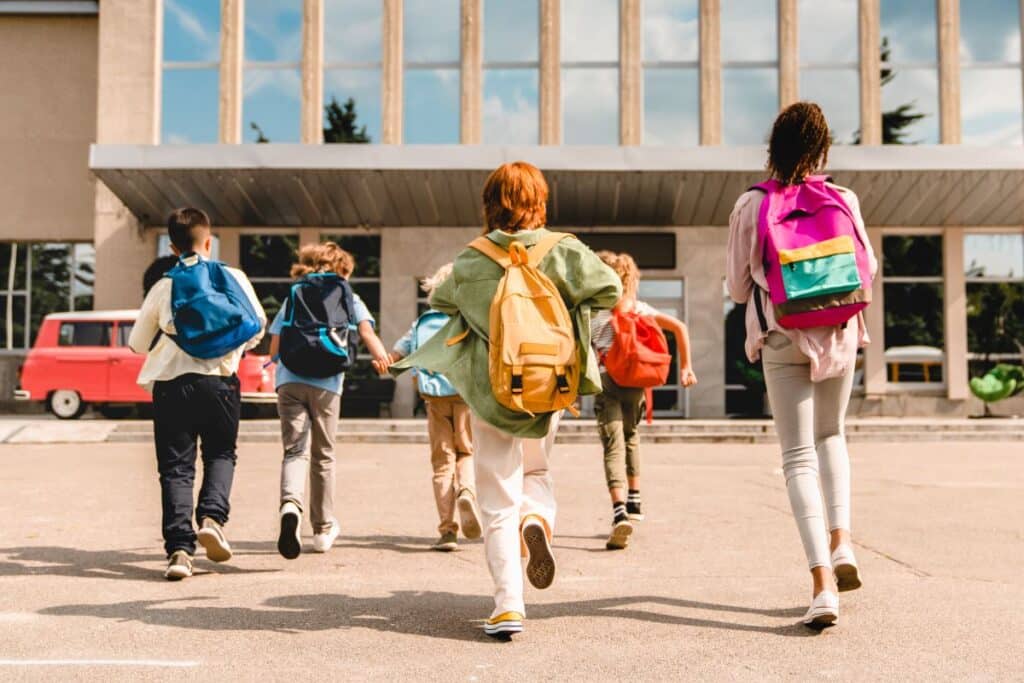Many of the answers on how to improve school safety and security depend on the resources you, as a school or a district have available to you.
There is never a school year where safety is not a priority. We all know about the increased number of school critical incidents in the last couple of decades and how this has increased the need to ensure safe schools.
We also know from Pavlov and other great psychologists that safety is the number need of students. If a student is not safe, not fed and not comfortable in a classroom, the odds of learning are slim to none. This is the same for the adults and educators in the school building. It is hard to teach when you are concerned for you and your students’ safety.
Thus, if there is any question about the need for school safety, that should be put to rest.
First on an individual school basis, there are checkpoints that each school can assess what needs to be done to improve their own school safety.
Let’s dive into three items that can improve school and security:
What is your locked door policy?
This applies to classrooms in the building. Studies on school attacks have shown that locked doors are the key to survival. Intruders are looking for unlocked doors that lead to easy targets. Thus, locked doors buy time for intruders who see them as obstacles.
Most parts of school safety are designed to buy time to allow first responders to arrive. Depending on your school’s location, you may need to buy up to 15 minutes, especially if it is a rural school.
Some questions to ask:
- Are teachers required to lock their classroom doors all the time?
- Are there any door locks that need to be fixed?
How is your school’s perimeter protected?
This has two layers to it, the doors that face outside the building and the perimeter around the school.
First, the doors around the school building. How are visitors allowed into the building? Is there one place for them to come through? Do you have a secure vestibule before visitors are actually in the building? Are those doors magnetically sealed or closed by more than just the lock to keep someone out?
Many schools have badges that deactivate magnet doors that allow them into the building.
Is there a way to have a person in charge of watching through video who comes to all the doors that allow entry to a building? Are there regular or weekly door checks that happen each week to check for doors that are not working right.
Where this author is in Texas, some of our doors can be pulled open with enough force when the temperature outside gets below 30 degrees, and we find this during our weekly door sweeps during our short winters.
Much like a locked classroom, an airtight school with monitored entries can be difficult to enter for someone who intends to do harm.
For many schools, next to a locked door, how difficult it is to enter the school is the next best line of defense.
The next layer of defense is the perimeter around the school. In the state of Texas, one of the newer suggestions from safety officials is to have a secure fence with gates as another perimeter. For urban schools, this could be difficult as your building may be next to another building and that can act like a perimeter.
The outer perimeter design as a fence is like the locked door theory, it buys more time and creates another barrier that makes it difficult for someone off campus to simply want onto campus and do harm.
The outer perimeter would have timed gates and keypads to control who is going behind the perimeter. Push bar gates would be available for those who need to leave in emergencies like a fire drill or something similar. This idea has been around for a while around playgrounds to protect students from kidnappers, etc.
Armed Personnel on Campus
The next form of school safety from critical incidents goes back to response time from emergency responders and who is on campus that can respond quickly if the worst case scenario is taking place.
Many school districts in the nation have moved to have some form of security officer on campus. Whether the district has started its own police department with student resource officers on campus or has contracts with local police departments, having an officer on campus provides many positive safety considerations.
From an administrative standpoint, having the resources right there on campus for legal advice or legal incidents that might involve young adults, is very handy.
Then of course if the worst-case scenario happens, an officer is on campus who is armed, trained and ready to act with a direct line to get help.
Other school districts who do have the financial resources or manpower to have an officer on campus have moved to having trained armed staff on campus. I was fortunate to work at a school district that had both on campus.
This school district posted signs in front of all schools making it clear if someone came on campus with the intent to do harm to students, there were people on campus who were trained to protect the campus.
The idea was to provide a moment of pause and consideration for anyone who might come on campus to do harm. Remember, those who wish to do harm on campus want easy targets and to not be hassled. These districts with officers and/or trained personnel are not easy targets.
There are legitimate arguments to be made having trained personnel on campus who are not fully trained police officers. Their psychological and physical training are not as extensive and without as extensive training, will they truly respond as they need to if the worst-case scenario takes place.
Law enforcement also has concerns about being able to identify these personnel when they enter the building with the intent to take down the person causing harm in the building. It is easier to identify law enforcement than those in street clothes who are armed.
In short, keep doors locked, secure your perimeter and have some sort of rapid response available for the safety of the campus. Consistently monitoring these three aspects will make a campus safer for everyone on campus and provide checkpoints for a campus to evaluate what they can do better protect those on campus.
Educators never stop learning; check out our available graduate degree programs to hone your skills and promote lifelong learning and academic excellence.




